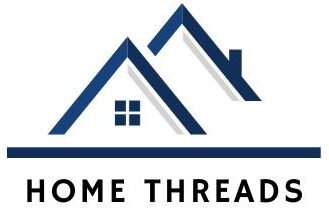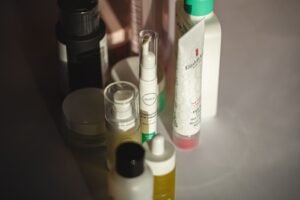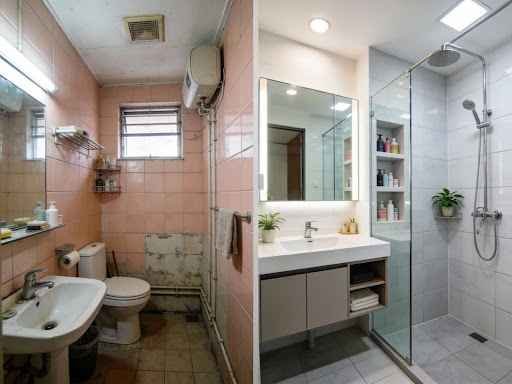Introduction: Is a Glycolic Acid Peel at Home the Secret to Glowing Skin?
Have you ever looked in the mirror and wished your skin looked just a little brighter, smoother, or more even? If so, you’re not alone. In recent years, the glycolic acid peel at home has become a go-to solution for people hoping to achieve radiant, refreshed skin without the hassle or expense of a trip to the dermatologist. But what exactly is a glycolic acid peel, and why are so many skincare enthusiasts raving about doing it themselves?
A glycolic acid peel is a type of chemical exfoliation that uses glycolic acid—a naturally derived alpha-hydroxy acid (AHA)—to gently remove dead skin cells, unclog pores, and reveal a fresher, more youthful complexion underneath. While professional peels have been around for decades, the rise of at-home chemical peels has made this powerful treatment more accessible than ever. With the right knowledge and a careful approach, you can safely perform a glycolic acid peel at home and enjoy many of the same benefits as a spa or clinic treatment.
Of course, with great power comes great responsibility. Chemical peels, even those designed for home use, require careful preparation, proper technique, and diligent aftercare to ensure safety and effectiveness. In this comprehensive guide, you’ll learn everything you need to know about the glycolic acid peel at home—from the science behind how it works to step-by-step instructions, aftercare tips, and answers to the most common questions. Ready to discover if a glycolic acid peel at home is right for you? Let’s dive in.
What Is a Glycolic Acid Peel?
The Science and Origins of Glycolic Acid
Glycolic acid is the smallest and most widely used alpha-hydroxy acid (AHA) in skincare. It’s derived primarily from sugar cane, which gives it a unique ability to penetrate the skin more deeply than other AHAs. Thanks to its small molecular size, glycolic acid can reach the lower layers of the epidermis, making it highly effective for superficial chemical peels .
How Glycolic Acid Works on the Skin
When applied to the skin, glycolic acid breaks down the bonds that hold dead skin cells together on the surface. This process, known as desquamation, allows those dull, damaged cells to slough off, revealing the fresher, healthier skin beneath . But glycolic acid doesn’t stop there—it also stimulates collagen production and increases cell turnover, which can help reduce the appearance of fine lines, wrinkles, and even mild acne scars .
Benefits of Glycolic Acid Peels
- Brightening: By removing the outer layer of dead skin, glycolic acid peels can instantly brighten a dull complexion.
- Acne Treatment: Glycolic acid helps unclog pores and reduce oiliness, making it a great option for those struggling with mild to moderate acne .
- Anti-Aging: Regular use can soften fine lines, improve skin texture, and boost collagen for a more youthful appearance .
- Hyperpigmentation: Glycolic acid can fade dark spots, melasma, and sun damage by accelerating the shedding of pigmented cells .
Types of Glycolic Acid Peels
Glycolic acid peels come in various strengths, typically ranging from 10% to 30% for at-home use. Professional peels can go as high as 70%, but these are only administered by licensed professionals due to their potency and risk of side effects . For most beginners, starting with a 10–20% concentration is recommended, gradually increasing as your skin builds tolerance.
Why Choose a Glycolic Acid Peel at Home?
Convenience and Cost-Effectiveness
One of the biggest draws of a glycolic acid peel at home is the convenience. No need to schedule appointments, drive to a clinic, or spend hours in a waiting room. You can perform the treatment in the comfort of your own bathroom, on your own schedule. Plus, at-home peels are significantly more affordable than professional treatments, which can cost anywhere from $150 to $600 per session . Most at-home kits range from $10 to $50, making them accessible for a wide range of budgets .
Control Over Ingredients and Strength
When you do a glycolic acid peel at home, you have full control over the products you use and the strength of the peel. This means you can choose formulas that are free from fragrances, dyes, or other potential irritants, and you can start with a lower concentration to see how your skin reacts before moving up .
Suitable Skin Types for At-Home Use
Glycolic acid is generally safe for most skin types, including oily, dry, and combination skin. However, those with sensitive skin should start with the lowest concentration and always perform a patch test before full application . If you have darker skin, a history of keloids, or certain skin conditions (like eczema or rosacea), consult a dermatologist before trying a glycolic acid peel at home.
When to Avoid At-Home Glycolic Acid Peels
There are times when it’s best to skip the at-home peel:
- If you have open wounds, active infections, or severe acne flare-ups.
- If you’re using prescription retinoids, strong exfoliants, or have recently had another professional skin treatment.
- If you’re pregnant or breastfeeding, check with your healthcare provider first.
By understanding your skin’s needs and limitations, you can safely enjoy the benefits of a glycolic acid peel at home.
Preparing for Your Glycolic Acid Peel at Home
Step 1: Plan Ahead
Choose a time when you can avoid social events for a couple of days, as your skin may be red or sensitive after the peel. Many people opt for a Friday evening so they have the weekend to recover .
Step 2: Discontinue Certain Products
Stop using prescription anti-acne products, retinoids, benzoyl peroxide, or other strong exfoliants (like salicylic acid) 2–3 days before your peel. These can make your skin more sensitive and increase the risk of irritation .
Step 3: Cleanse Gently
Wash your face with a gentle, soap-free cleanser. Avoid harsh scrubs or exfoliants. Micellar water or oil-based cleansers are good options for sensitive skin, but be sure to rinse thoroughly .
Step 4: Gather Your Supplies
Before you start, make sure you have:
- A mild cleanser
- A cold cloth or aloe vera gel
- A light, fragrance-free moisturizer
- Broad-spectrum sunscreen (SPF 30 or higher)
- Optional: a cooling mask for comfort
Step 5: Patch Test
Always patch test the peel on a small area of skin (like behind your ear or on your inner arm) 24 hours before full application to check for adverse reactions .
Step 6: Prep Your Skin
Wipe your face with a prep solution (often included in kits, or use witch hazel or diluted rubbing alcohol) to remove oils and ensure even penetration of the acid .
Step 7: Protect Sensitive Areas
Apply petroleum jelly to the corners of your eyes, lips, and nostrils to shield these sensitive areas from the acid .
By following these preparation steps, you’ll set yourself up for a safe and effective glycolic acid peel at home.
Step-by-Step Guide to Doing a Glycolic Acid Peel at Home
Step 1: Choose the Right Strength
If you’re new to glycolic acid peels, start with a lower concentration (10–20%). More experienced users may use up to 30%, but higher strengths increase the risk of irritation .
Step 2: Apply Evenly
Use a clean fan brush, cotton pad, or your fingertips to apply a thin, even layer of the glycolic acid solution to your face. Avoid the eyes, lips, and any broken skin .
Step 3: Timing Is Everything
- For first-timers, leave the peel on for just 1 minute.
- As your skin builds tolerance, you can gradually increase to the maximum time recommended by the product (usually up to 3 minutes for at-home peels).
- If you feel intense burning or pain, rinse off immediately .
Step 4: Neutralize the Acid
Most at-home peels require neutralization. Use the provided neutralizer, a mild cleanser, or simply rinse thoroughly with cool water to stop the acid’s action .
Step 5: Soothe and Moisturize
After neutralizing, apply a gentle, hydrating moisturizer. If you experience discomfort, use aloe vera or a cooling mask .
Step 6: Watch for Adverse Reactions
Mild tingling, redness, or tightness is normal, but if you experience severe redness, swelling, blistering, or signs of infection, discontinue use and consult a dermatologist .
Quick Reference: Glycolic Acid Peel at Home Workflow
- Stop strong actives 2–3 days before
- Cleanse with a gentle, soap-free cleanser
- Patch test 24 hours before
- Apply prep solution and let skin dry
- Protect sensitive areas with petroleum jelly
- Apply peel evenly, avoiding eyes/lips
- Leave on for 1–3 minutes (start low)
- Neutralize and rinse thoroughly
- Soothe with aloe/cooling mask
- Moisturize generously
- Avoid sun, use SPF 30+ daily
- Repeat no more than recommended frequency
By following these steps, you can safely enjoy the benefits of a glycolic acid peel at home while minimizing risks and maximizing results .
Aftercare and Maintenance Post Glycolic Acid Peel
What to Expect After the Peel
It’s normal to experience some redness, mild peeling, and increased sensitivity after a glycolic acid peel at home. These effects usually subside within a few days, but everyone’s skin is different .
How to Soothe and Hydrate Skin
- Use a gentle, non-foaming cleanser and cool or lukewarm water to wash your face .
- Apply a fragrance-free, nourishing moisturizer several times a day to keep skin hydrated and comfortable .
- Look for ingredients like panthenol, ceramides, or hyaluronic acid.
Sunscreen Importance and Sun Avoidance Tips
Your skin will be more sensitive to UV rays after a peel. Apply a broad-spectrum sunscreen with at least SPF 30 every day, even if you’re indoors or it’s cloudy. Reapply as needed, especially if you’re outside .
Recommended Skincare Routine for Days Following the Peel
- Morning: Gentle cleanser, moisturizer, sunscreen
- Evening: Gentle cleanser, moisturizer
- Avoid exfoliants, retinoids, and strong actives for at least one to two weeks .
When to Seek Professional Advice
If you notice severe or persistent redness, swelling, pain, blisters, or signs of infection, contact a healthcare provider immediately .
Key Takeaways: Glycolic Acid Peel at Home
- Glycolic acid peels at home offer a convenient, cost-effective way to brighten skin, treat mild acne, and reduce signs of aging.
- Proper preparation, application, and aftercare are essential for safety and effectiveness.
- Start with a low concentration, patch test, and follow instructions carefully.
- Always use sunscreen after a peel to protect your skin.
- If you experience severe side effects, seek professional advice.
Common Myths and FAQs About Glycolic Acid Peel at Home
Mythbusting: Setting the Record Straight
Myth 1: Glycolic Acid Peels Are Only for Oily Skin
Reality: Glycolic acid is suitable for all skin types, including dry, sensitive, and oily skin. Sensitive skin types should start with a lower concentration and monitor their skin’s response .
Myth 2: Glycolic Acid Is Harmful to the Skin
Reality: When used in appropriate concentrations, glycolic acid is safe and effective. It’s a well-studied AHA that’s been used in skincare for decades .
Myth 3: You Need to See Visible Peeling for the Peel to Work
Reality: Visible peeling is not an indicator of effectiveness. Glycolic acid can improve skin texture and tone without causing noticeable peeling .
Myth 4: At-Home Peels Are as Strong as Professional Peels
Reality: At-home glycolic acid peels are formulated with lower concentrations (typically 10–30%) compared to professional treatments, which are stronger and should be administered by a dermatologist .
Myth 5: Glycolic Acid Peels Cause Thinning Skin
Reality: Glycolic acid peels, when used as directed, do not thin the skin. In fact, they can stimulate collagen production and improve skin resilience .
Frequently Asked Questions
Q: Can I use a glycolic acid peel at home if I have sensitive skin?
A: Yes, but start with a low concentration and patch test first. Monitor for irritation and increase usage gradually .
Q: How often should I use a glycolic acid peel at home?
A: Start with once a week and increase as tolerated. Daily use is possible with low concentrations, but always listen to your skin .
Q: Do I need to wear sunscreen after using a glycolic acid peel at home?
A: Absolutely. Glycolic acid increases your skin’s sensitivity to the sun, so daily sunscreen is a must to prevent sunburn and hyperpigmentation .
Q: Can I use glycolic acid with other active ingredients?
A: Be cautious when combining glycolic acid with other strong actives (like retinoids or vitamin C), as this can increase irritation. Introduce new products slowly and consult a dermatologist if unsure .
Q: What should I do if my skin becomes irritated after a glycolic acid peel at home?
A: Stop using the product, apply a gentle moisturizer, and avoid other exfoliants until your skin calms down. If irritation persists, consult a dermatologist .
Q: Are at-home glycolic acid peels effective?
A: Yes, at-home peels can provide noticeable benefits for texture, tone, and mild pigmentation, though results are more gradual compared to professional treatments .
Conclusion: Your Path to Radiant Skin Starts at Home
A glycolic acid peel at home can be a game-changer for anyone looking to boost their skin’s radiance, smoothness, and overall health. By understanding the science behind glycolic acid, preparing your skin properly, following step-by-step instructions, and practicing diligent aftercare, you can safely enjoy the benefits of this powerful treatment without leaving your house.
Remember, the key to success is patience and consistency. Start slow, listen to your skin, and don’t be afraid to seek professional advice if you have questions or concerns. With the right approach, a glycolic acid peel at home can help you achieve the glowing, youthful complexion you’ve always wanted.
Ready to give it a try? Gather your supplies, follow the steps, and let your skin shine!







